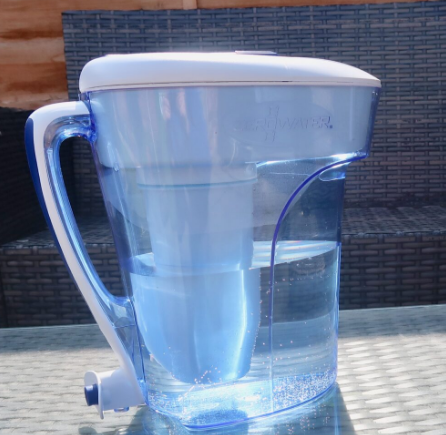How Do Water Pitcher Filters Work? Explained!

If you have a water filter pitcher in your refrigerator right now, you probably don’t think much about it – just fill it up and you’re good to go, right? When was the last time you changed the filter?
If you’ve been sipping on Brita water because you can’t stand tap water and you haven’t swapped in a new filter yet, we’ve got some good news for you. Your filtered water may not be as pure as you think.
The water may even be worse than when it came from the tap. Here’s what you need to know about water filter pitchers, and how to make sure you’re using them correctly – and protecting yourself.
How do water pitcher filters work?
“Pump filters use different types of media, depending on the brand – most use activated carbon to reduce contaminants and impurities,” says Rick Andrew, director of NSF International Global Water. “Activated carbon works by adsorption, which means that it draws contaminant molecules to it and they adhere strongly to it.”
Carbon’s large surface area acts like a sponge, absorbing contaminants from tap water. They remove:
- metals like lead, copper, and mercury
- chemicals like chlorine and pesticides
- organic compounds that affect the taste and smell of water
A Brita water filter pitcher, for example, uses a coconut-based activated carbon filter to remove chlorine, zinc, copper, cadmium, and mercury.
Activated carbon filters do not remove all nitrates, dissolved minerals, or bacteria and viruses from water through absorption. Because they don’t bind to the carbon, they pass through the filter.
Filters can remove calcium and magnesium ions from water using a material called ion exchange resin.
Water filter pitchers are an affordable, easy-to-use option for purifying your water, which is why they’re popular. Consumer Reports estimates that filters cost between $32 and $180 per year.
You should look for a label that indicates the water pitcher filter is NSF-certified
Trusted Source
At-home filter treatments include reverse osmosis and distillation, which are the most effective but also the most expensive and complex.
These include refrigerator filters, under-the-sink filters, and even whole-house filtration systems.
How often do you need to replace the water filter in your pitcher?
Depending on your brand and model, you’ll need to change your filter at different times.
“The most important thing for consumers to remember is that they must change their filters according to the manufacturer’s recommendations or they won’t be effective” says Andrew. “They are certified to reduce contaminants only according to the manufacturer’s instructions.”
You should find out how long your filter will last in the product instructions. Typically, it’s measured in months, or how much water has been filtered, usually in gallons. Sensors are also available in some pitchers that indicate when to replace them.
What happens if you don’t change your filter regularly?
The old filter will not only be less effective – and crazy slow – but also really dirty and gross. Therefore, you are putting yourself at risk for drinking whatever contaminants exist in the tap water to begin with, and whatever is growing (yes, growing) in that old filter.
“Filters that are not changed on schedule may not be able to reduce the contaminants they were originally designed to do. This contaminant might result in potentially harmful health effects if it’s not filtered out,” said Andrew.
According to our previous discussion, your water filter doesn’t kill bacteria. Bacteria can both be trapped and flow into your water, so you should worry about bacteria stuck in your filter.
How often do filters need changing?
Brita recommend that a person change their water filter every 2–6 months, depending on the type of dispenser or pitcher.
In most cases, this will mean that people can filter 40–120 gallons of water before a new filter is necessary.
Also Check: pncpaycard
Keep Visiting Speedposts.org for latest updates


